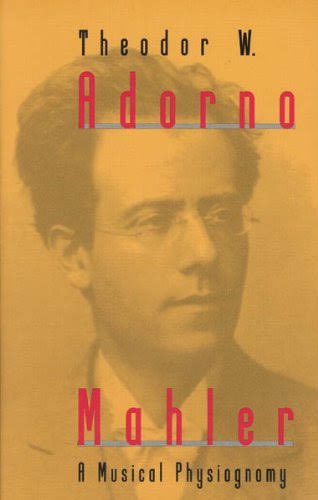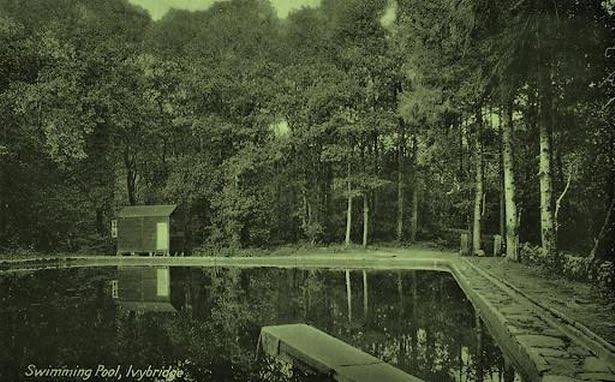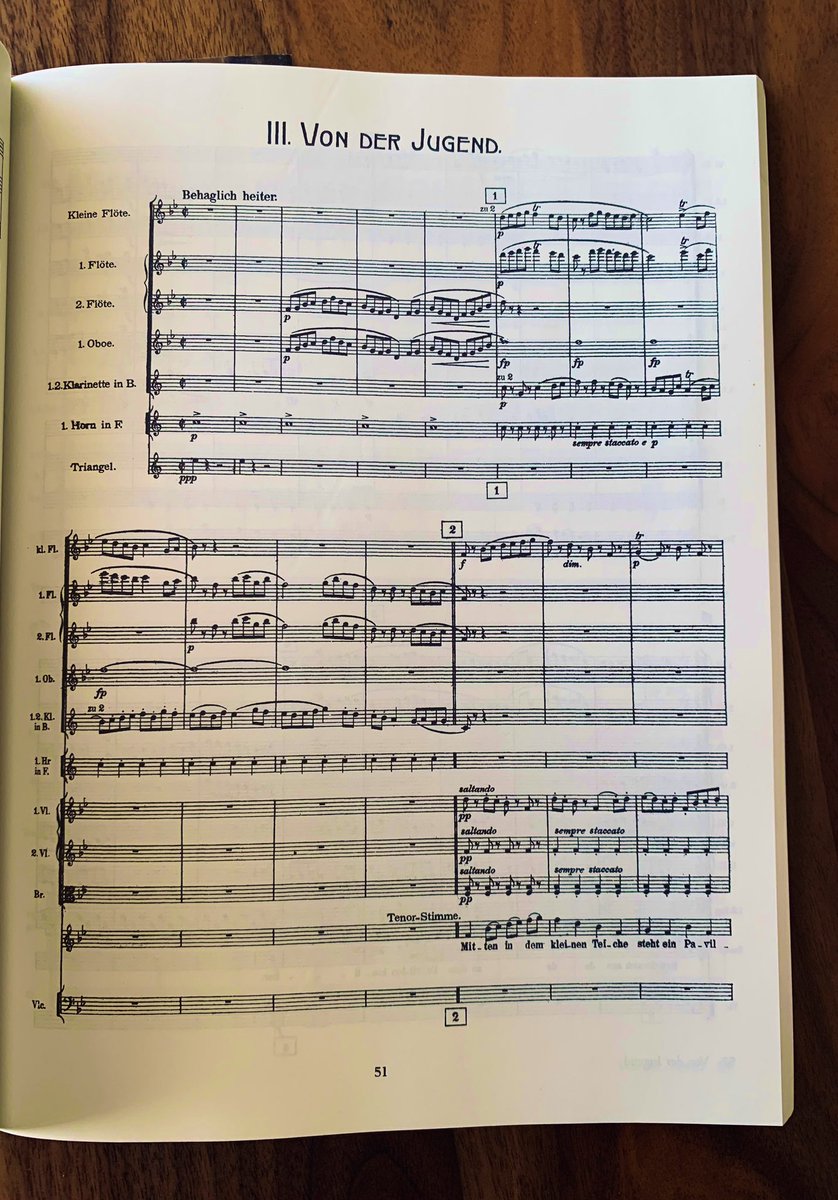#Mahler Introductory thread of #DasLied (DLvdE) The first three songs are briefly analyzed. I included streaming options, the poems have links on each of them as well, so you can read as you listen.
Hope you enjoy it!
Hope you enjoy it!

Mahler completed Das Lied von der Erde in September 1908. It was his intent not numbering it a ‘Ninth Symphony’ for the superstitious belief that ‘no great composer lives to create after his Ninth’. 

He first thought of calling the symphony Das Lied vom Jammer der Erde (The Song of the Misery of the Earth), but he settled on DLvdE because according to his friend Richard Specht: Mahler was emotionally drained and felt that a ‘farewell’ described more clearly his experience. 

Having already incorporated song in his symphonies: two, three, four and eight, Mahler had finally achieved a completed symphony of songs, elegant in their musical detail, but marked with a devastating experience in its emotional and lyrical meaning. Let’s briefly review. 

All translations are from The Mahler Foundation. The first song:
mahlerfoundation.org/mahler/composi…
mahlerfoundation.org/mahler/composi…
In this first song Das Trinklied vom Jammer der Erde, the singer/speaker has an audience, he constantly searches for meaning in contemplation, he invites others to listen, he sings a song of sorrow commenting on how ‘Life is dark, and so is death!’
open.spotify.com/track/1zheUu24…
open.spotify.com/track/1zheUu24…
A draining and dark gloom hovers over the music, a voice ruptures the self, a pure Mahler creation. The poem describes the emotional state of being from the drinking poet. What is life? ‘Joy and song fade and die’ he sings. The music enthralls us with its pentatonic themes. 

Here nature and primitive self complement the sound of Mahler’s creation in the form of an ape crying under the moon on a tomb. Reaching a climax with the orchestra playing ascending phrases. Horn-calls rapture the scene as the speaker and his sorrow continue. Wine again soothes. 

Deryck Cooke mentions of this first song: “A furious defiance of grief, which keeps falling into a shadowy subsidiary theme. There is an exquisite central section Orchestra, a shimmering vision of earth’s beauty” 

If we encountered pondering life in the first song, suffering is the tale of song two. A more intimate Chamber like-feel, Nature again, with lakes, stiff grass and the cold, vanishing scents of flowers expose a loneliness and a melancholic self in the alto/baritone. 

An oboe develops a sense of failure and sadness, a voice that fuses with violins, with contemplation turning into soliloquy of what has gone and perhaps will never return. A fatigue of sorts sets in, climactic moments with wind-like sounds all around make this a beautiful song. 

Analysis of pain and inner struggle find an anchor here, lingers like the oboe that ends the piece, soothing in lament.
open.spotify.com/track/7p7LTwG0…
open.spotify.com/track/7p7LTwG0…
Song 3 ‘Of Youth’ shocks us with the first contradiction of DLvdE. No suffering days of autumn here. It’s a party of poets in a pavilion, with a pool! The singer experiences a beautiful moment around friends. Even Adorno found it surprising: 

“Directly with tangible connections through motives, the world of Chinese imagery of DLvdE is derived from the biblical Palestine of the Faust music, particularly in the outwardly most cheerful song ‘Von Der Jugend’” 

Tenor finds his way with woodwind instruments that become a resonating echo of fun. A joyful episode, he gazed at a pool, leaves his friends a moment to contemplate his inner self. This very brief event (the shortest song) and its brisk tempo almost makes us believe in happiness. 

Rhythm here is used to ‘flow’ with the ‘grooves of the party’ Those short bursts of woodwinds and bells, sound like energetic phrases that invite us to sing, laugh or even dance.
open.spotify.com/track/0hdrK3am…
open.spotify.com/track/0hdrK3am…
These three songs are for me a description of lament, sorrow, melancholy, pain and finally a denial of them, or a moment of peace, with loved ones, an audience but room for an analytical self, at a party no less! 

When the singer stares at the pool a shift in retrospect of where he is sets in, “Everything stands on its head in the pavilion of green and white porcelain. Like half-moon the bridge stands, its arch inverted. Friends. Beautifully dressed, drink, chat” A rare tale of happiness. 

Hope you enjoyed this thread. I’ll leave you with a Chamber version of Das Lied. Stay tuned for thread number three.
open.spotify.com/track/7aFqEiVW…
open.spotify.com/track/7aFqEiVW…
• • •
Missing some Tweet in this thread? You can try to
force a refresh

























